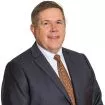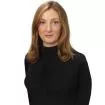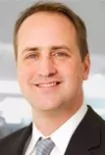On January 20, 2015, the Supreme Court issued its decision in Teva Pharm. USA, Inc. v. Sandoz, Inc.,135 S. Ct. 831 (2015) and changed the standard of deference for claim construction. Previously, all claim construction decisions were reviewed de novo by the Federal Circuit, whether or not the decision involved any evidentiary underpinnings, such as extrinsic evidence or expert testimony. In Teva, the Court held that subsidiary factual findings about extrinsic evidence should be reviewed for clear error on appeal.
The patent in Teva covers a multiple sclerosis drug, Copaxone. After Sandoz tried to market a generic version of the drug, Teva sued for patent infringement. Sandoz argued that the patent was invalid because a claim term was indefinite. The claim required the active compound to have "a molecular weight of 5 to 9 kilodaltons." Sandoz argued that the claim did not meet the definiteness requirement under 35 U.S.C. § 112 because it did not state which of three methods was used to determine the weight of the active compound. The parties each offered expert testimony regarding how one of ordinary skill in the art would understand molecular weights. The district court adopted the testimony of Teva's expert and found that the claim was not invalid for indefiniteness. On review, the Federal Circuit reversed the district court's findings and found the patent invalid. The Supreme Court vacated the Federal Circuit's decision, providing a new standard of review for the Federal Circuit to apply to the district court's claim construction decisions.
Under the Court's new standard, review of district court decisions based strictly on intrinsic evidence will remain de novo. Only subsidiary factual findings, such as whether to credit one expert's testimony over another, should be reviewed for clear error. The Court provided a few examples of how to apply the new standard, stating "[i]n some cases, however, the district court will need to look beyond the patent's intrinsic evidence and to consult extrinsic evidence in order to understand, for example, the background science or the meaning of a term in the relevant art during the relevant time period." Where those subsidiary facts are in dispute, the court will have to make "subsidiary factual findings about that extrinsic evidence." Once the Court has made a factual finding "that, in general, a certain term of art had a particular meaning to a person of ordinary skill in the art at the time of the invention, the district court must then conduct a legal analysis: whether a skilled artisan would ascribe that same meaning to that term in the context of the specific patent claim under review." On review, the Federal Circuit will examine the district court's legal analysis de novo, but it may only overrule the district court's factual finding if it is "clearly erroneous."
The first precedential Federal Circuit opinion addressing claim construction after Teva—In re Papst Licensing Digital Camera Patent Litigation—involved only review of intrinsic evidence. 113 U.S.P.Q. 2D (BNA) 1533 (2015).The Federal Circuit acknowledged the new Teva standard, stating: "In this case, we review the district court's claim constructions de novo, because intrinsic evidence fully determines the proper constructions. See Teva Pharm. U.S.A. Inc. v. Sandoz, Inc.,135 S. Ct. 831, (2015). As we have noted, the district court relied only on the intrinsic record, not on any testimony about skilled artisans' understandings of claim terms in the relevant field, and neither party challenges that approach." In that case, the Federal Circuit reversed all of the district court's constructions under review.
The new Teva standard raises practical questions for district courts, litigants, and patent applicants. Some judges discourage expert testimony on claim construction. Will these judges be more amenable to hearing such testimony now that their findings regarding that testimony will be afforded more deference? Will districts that do not generally allow separate Markman hearings change their procedures? Will patent applicants provide greater disclosure regarding significant patent claim terms to avoid a "battle of the experts"? Will cases such as In re Papst become the exception rather than the norm? It will take several years for the dust to settle and trends to emerge. In the meantime, experts are likely updating their CVs with their Markman experience and waiting by the phone.
The content of this article is intended to provide a general guide to the subject matter. Specialist advice should be sought about your specific circumstances.












